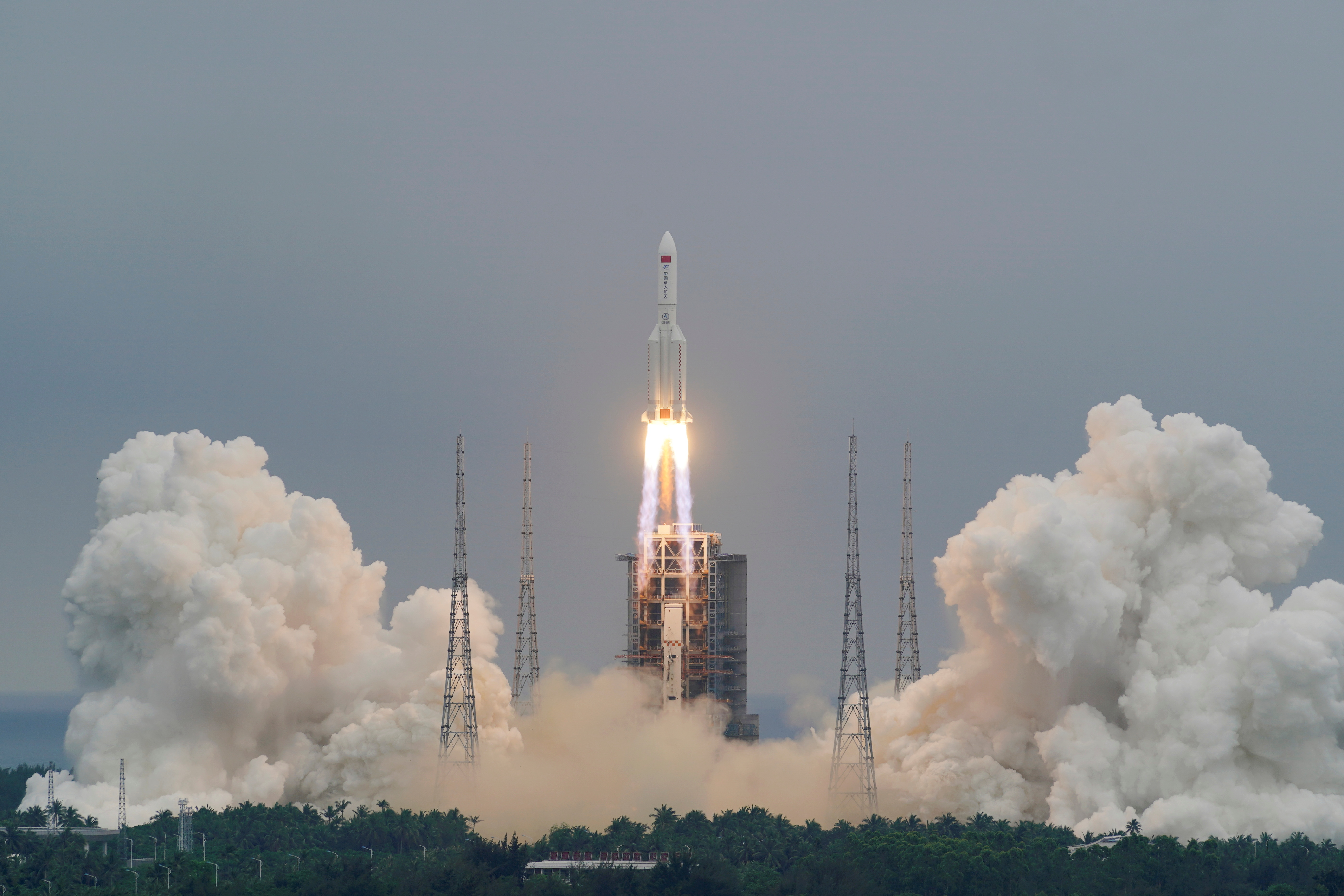Crash-Landing: Coming to a Site Near You
"I would imagine they take the view that NASA took back in the 1970s, which is that the Earth is big, this thing probably won't hit anything. Which is true, although it wasn't true last time.""[The worst-case scenario for the land is] sort of comparable to a small plane crash.""They couldn't be bothered to do the work to make it a safer launch vehicle because they didn't think that the risk was high enough to worry [about[.""And my comeback to that is that every other country since the early 1980s, has felt it was worth the worry not to do this.""It makes the Chinese rocket designers look lazy that they didn’t address this."Jonathan McDowell, astrophysicist, Harvard University
 |
| The Long March-5B Y2 rocket, carrying the core module of China's space station Tianhe, takes off from Wenchang Space Launch Center in Hainan province, China April 29, 2021. China Daily via REUTERS |
Beijing in its indomitable vision of super-starring and superceding all other nations has distinguished itself yet again. Not merely by sending off a rocket into outer space as another in a building block for its first permanent space station, but being oblivious to its responsibility in ensuring that the rocket launcher spinning its way through space having sent the module on its way, would have a controlled entry back to Earth, rather than falling where it may, unpredictably.
The Long March 5B Y2 rocket left China's Hainan Island with its unmanned "Heavenly Harmony" module scheduled to arrive as a component part for Beijing's new space station. Separated from the launcher the module continued on its destined flight and arrival, while the core section having reached orbit now is heading back from whence it came, travelling at around 29,000 km/hr, all 21 tons of it. And where it will land, nobody knows, despite hopeful hypotheses.
Reduced to junk status it is expected to produce one of the largest uncontrolled re-entries of a spacecraft. Landing anywhere; the ocean somewhere, or an uninhabited piece of land, an island, just wherever. China appears unconcerned over the issue, ecstatic over its achievement of another space spectacular, the match of any other country -- almost. As far north as Beijing and Madrid and as far south as southern Chile and New Zealand, the Long March 5B could appear on re-entry.
The hope is, stated astrophysicist Jonathan McDowell, that re-entry will be harmlessly absorbed by an ocean, since 70 percent of Earth is covered by seas. Debris, he suggested, which survives the intense heat of re-entry, may fall into the ocean -- or perhaps areas without human
habitation. "Best sense you can get" by looking at the Long March 5B's
first launch in May of last year, with another uncontrolled re-entry was
debris falling on the Ivory Coast, resulting in damage to several
buildings.
 |
| People watch from a beach as the Long March-5B Y2 rocket, carrying the core module of China's space station Tianhe, takes off from Wenchang Space Launch Center in Hainan province, China April 29, 2021. China Daily |
Labels: China, Debris Re-Entry, Space Module, Space Station, Uncontrolled Landing

<< Home